How Vacuum Sealing Started
Vacuum sealing has revolutionized the storage and preservation of food. For thousands of years, humanity has always had a means of storing and preserving food. Drying food dates back to 12,000 BC when where Middle Eastern and Asian cultures would dry food under the hot sun as a means of preservation.
Approximately 4,000 years ago, people of India would pickle food as a means to preserve out of season food for long journeys, usually by sea. Sometimes the old ways are the best, and we use many of these techniques to this day. However, as technology has progressed, so has our means of preserving and storing food.
Where We Are Now
Vacuum packaging, also known as vacuum sealing, removes substantially all air from packages — rigid or flexible-before sealing and produces a vacuum inside. Prior to World War II, the French would vacuum seal food with a durable latex material to help preserve food. After the war, latex was eventually swapped out for more conventional plastic. Vacuum sealers were originally much smaller than they currently are.
It wasn’t until 1963 that German engineer Dr. Karl Busch introduced what we now know today as home and commercial vacuum sealers. Vacuum sealers made their commercial debut in the 1960s and 70s when grocery stores would seal turkeys. Vacuum sealers are used worldwide both commercially and residentially.
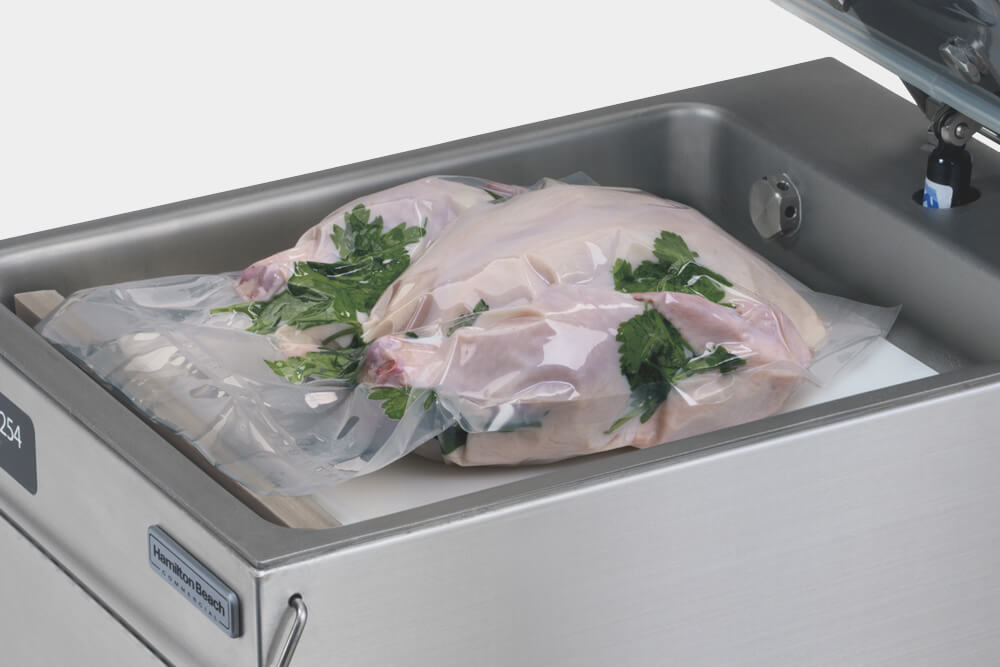
Benefits and Purpose of Vacuum Sealers
Starting, vacuum sealers are primarily used to preserve and store food. Put any object that can appropriately fit into a sealable bag and use a sealer to deprive the bag of oxygen. In doing so, it rids any perishable item of the possibility of deterioration. Restaurant owners are constantly finding new ways to incorporate vacuum sealing into their restaurant. Here are a few ways they’re doing it today:
- Vacuum sealers save you time. They’re cost-effective when buying food in bulk. Prepare your meals for the week with vacuum sealing.
- Shifting to vacuum sealing saves restaurant owners anywhere from 20-40% in food cost.
- If you’re a fan of sealers, you’ve probably heard of sous vide. Sous vide is a method of cooking that involves cooking vacuumed sealed food in thermal circulators.
- You can vacuum seal liquids. Although, you will want to freeze them to a solid. Doing so allows your liquids to be stored for longer.
Marinating
Culinary chefs use vacuum sealers to marinate products more efficiently, for example, chicken breast. Traditional marinade only gets to the surface of the protein. If you cut into the protein, it allows the marinade to flow further in. Vacuum sealing solves this problem. As the air is being removed from the product, you’re expanding the fibers in the protein. It penetrates deeper into the protein and gives a more succulent chicken without damaging it with cuts.
Hydroshock Fresh Herbs and Veggies
Every chef knows the challenge of keeping herbs and baby greens fresh. Hydroshocking is a newer and better alternative than wrapping them in a wet paper towel and keeping them on ice. With a vacuum sealer, add ice and run cold water. Put them into a vacuum-sealable pouch and remove air by running the vacuum cycle twice. This forces them to stay in cold water and extends their crispness for two days, without having to be refrigerated or put on ice.
Sanitation
Mold is grown and spread it breaks down food and spreads spores throughout the air. Vacuum sealers remove all of the air out of your food to prevent mold growth. Vacuum sealers allow you to manage your inventory and prevent cross-contamination safely. Cross-contamination occurs when germs spread from one food source to another.
Easy examples of this can be seen when juice from raw meats is spread to other food sources. By vacuum sealing, you’re knocking out two birds with one stone: inventory management and the prevention of potential food contamination.
Preservation
Food stays fresh for longer when vacuum sealed. Frozen foods that have been vacuumed sealed have a shelf life of 2-3 years while lasting 6-12 months when preserved normally. Food that has been sealed and refrigerated lasts anywhere from 1-2 weeks, while other means of food preservation lasts 1-3 days.
Sealers protect food from freezer burn and dehydration. Freezer burn occurs when water gets into your food. Vacuum sealing prevents your food from having contact with air, thus preventing your food from having freezer burn.
Vacuum sealing in recent years has risen in popularity due to food delivery companies such as Blue Apron and Purple Carrot. Companies like these deliver fresh ingredients in vacuum-sealed packaging. Restaurants and butcher shops worldwide have started shipping meat and other goods using the vacuum sealing method.
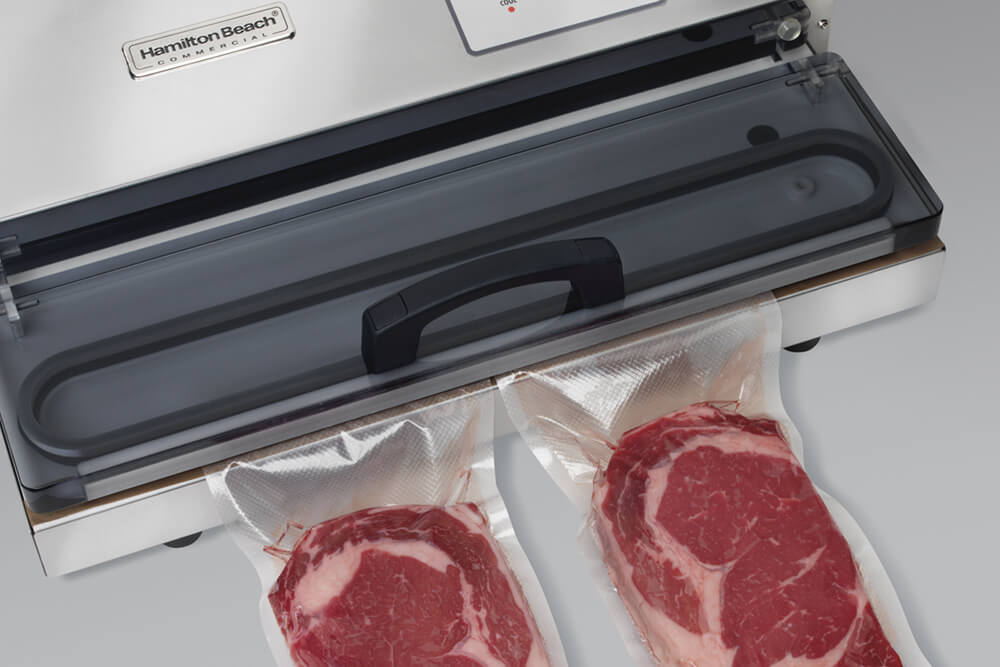
Choosing the Right Machine
If you’re packaging more than 30 items a day, you’ll have more than one year of payback if you upgrade to an in-chamber machine. Pistol machines are entry-level pumps that won’t last as long. The problem with pistol machines is that not as much oxygen is extracted from the pouch. Better pumps lead to more oxygen removal. Although, pistol machines are a great entry into vacuum sealers.
The size of your packaging will dictate the size of the machine. Are you sealing individual portions? Going for large racks of ribs? If you’re using vacuum sealers for portion control, a bigger sealer can be nice, but you’re better off getting a smaller one. Some restaurants used to get deliveries every day, so food preservation wasn’t a priority, but with COVID-19, it’s now once a week. There are two types of vacuum sealers that work in different ways: dry sealers and wet sealers. Let’s look at the differences between the two.
Things to Consider:
- How frequently is your restaurant vacuum sealing?
- Will you be sealing any liquid?
- If so, how much?
- What is the size of the items you will be sealing?
In-Chamber vs. Out-of-Chamber
The two main styles of vacuum sealers are in-chamber and out-of-chamber.
In-Chamber Sealers
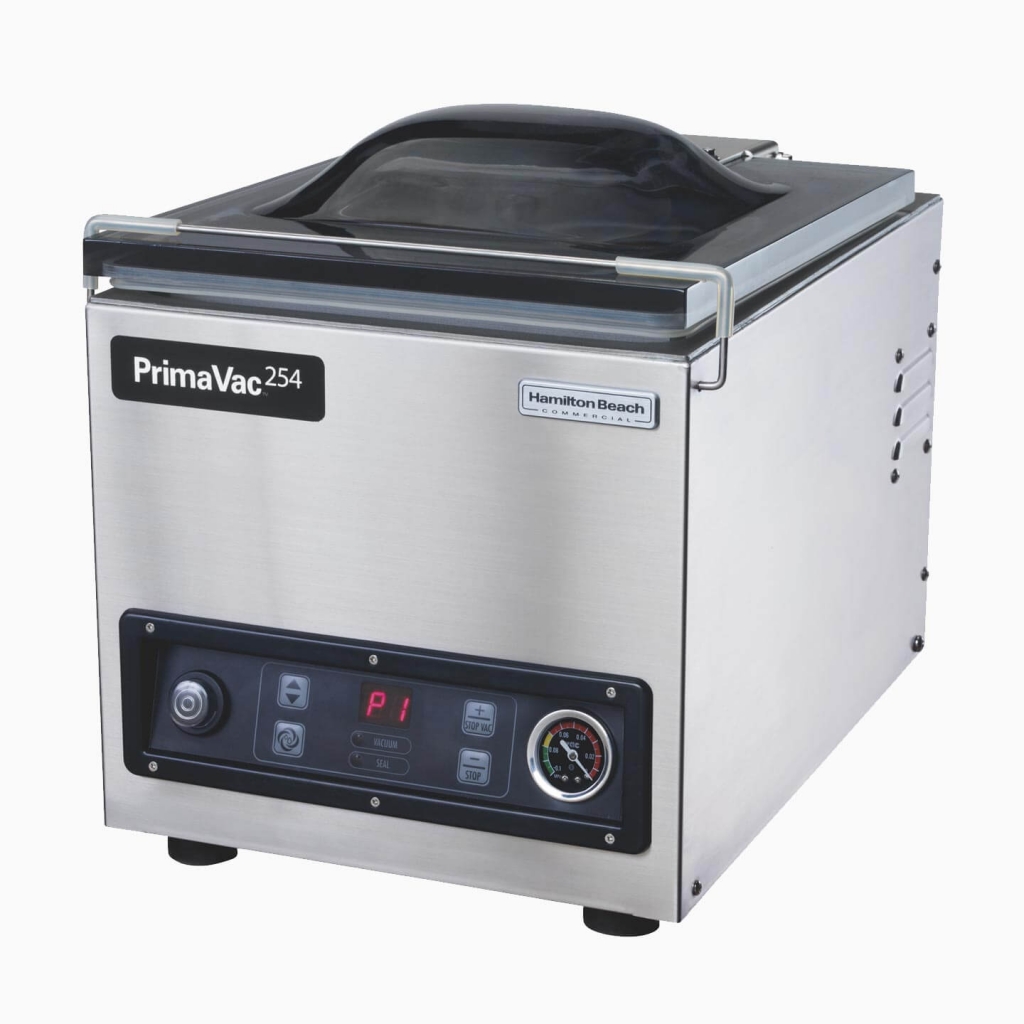
Primarily meant for commercial use, in-chamber sealers can be used with both solid and liquid foods. As the name suggests, pouches are placed inside where the air is then removed from the product. The chamber doesn’t use any suction but instead equalizes the air pressure in the pouch and outside the surrounding area.
They’re preferred over out-of-chamber sealers due to the option of having a wet pump. Wet pumps are pumps lubricated with oil that pulls and holds the moisture being sucked out of the product. Like lawnmowers, you’ll want to warm them up before using them for an efficient operation. You’ll want to change out the oil periodically for wet pumps. We suggest about every 3,000 cycles.
Out-of-Chamber Sealers
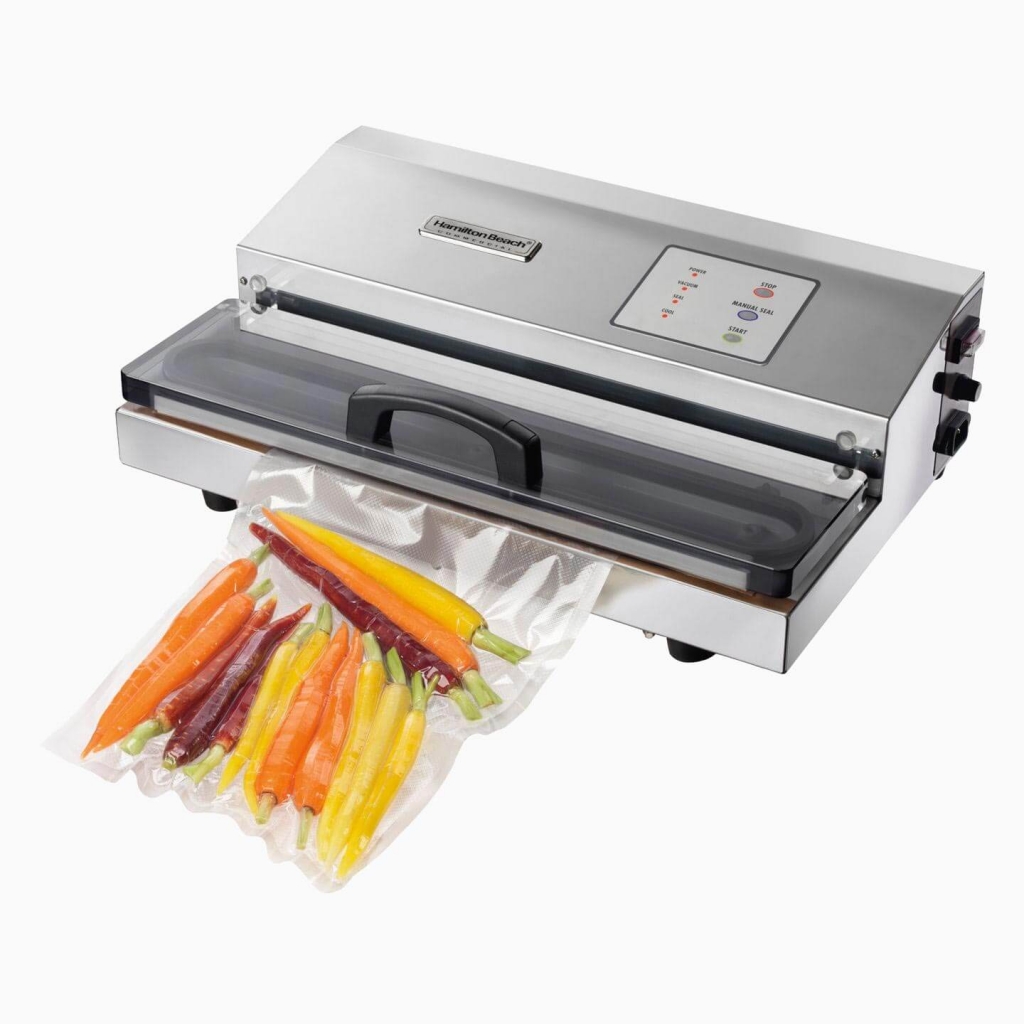
Out-of-chamber sealers, also known as suction sealers, can be used both residentially and commercially. Powered by suction, these sealers can only use perforated bags. Out-of-chamber sealers can seal solid and frozen items. These types of sealers cannot seal liquids due to their suction nature. As such, it is recommended that you freeze your liquids before attempting to seal using an out-of-chamber sealer.
Out-of-chamber sealers only have dry pumps and are cost-effective compared to their in-chamber counterpart. Dry pumps have a shorter lifespan than wet pumps and don’t always suck out all of the product’s moisture. With an economical pump, it tends to have a shorter life span.
| In-Chamber Sealers | Out Of Chamber Sealers | |
|---|---|---|
| Pump Style | Wet & Dry | Dry Only |
| Uses Oil | Yes | No |
| Cost | Cost More Up Front | Inexpensive |
| Longevity | Longer | Shorter |
Shop Hamilton Beach Commercial Vacuum Sealers »
Pouches
There are two types of vacuum sealer pouches: perforated pouches and smooth pouches. Perforated pouches are mainly used for external machines. They have bumps that are actually micro-channels that help pump out air. Although a more expensive pouch, they are the preferred pouch.
Smooth pouches, on the other hand, are an inexpensive route into vacuum sealer pouches. They’re primarily meant for in-chamber machines and cannot be used in external machines. In-chamber units suck the air out of the food item and then vacuum seal the bag’s content, including any liquid.
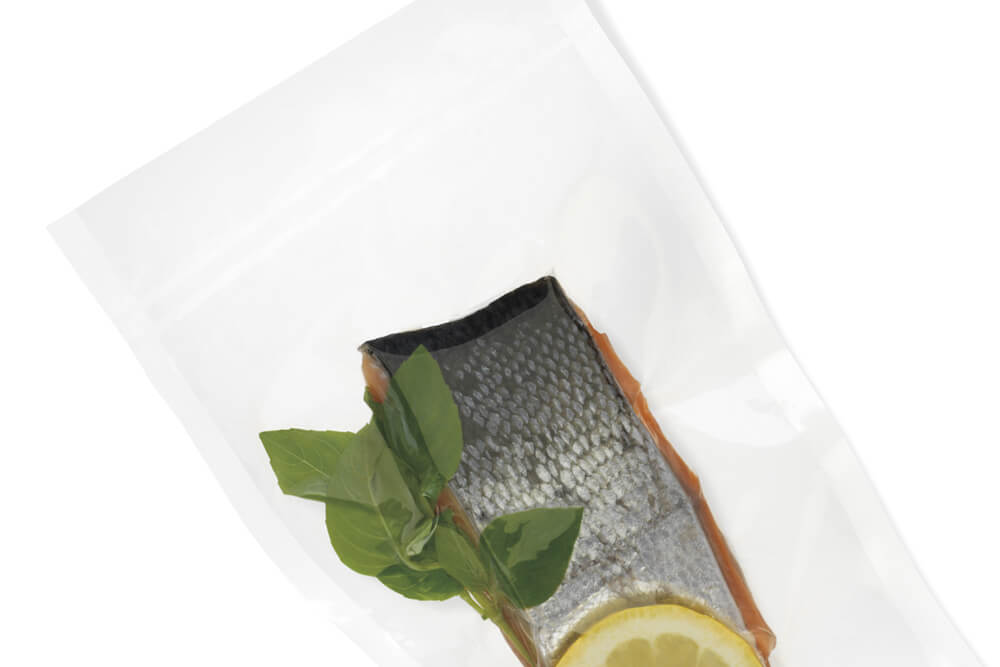
Why Hamilton Beach Commercial?

Hamilton Beach Commercial is a leading manufacturer in vacuum sealing. Their products are NSF certified, ETL sanitation listed, and are UL certified.
When you open up competitor sealers, they’re more than likely to look cluttered and full of wires. Hamilton Beach vacuum sealers are streamlined and designed to fit their customers’ needs.
An advantage over competitors, you’ll find most HBC vacuum sealers have clear viewing lids to make sure bags are lined up properly. Currently, Hamilton Beach produces the only NSF certified bag pouches. Their bags are interchangeable with most machines.

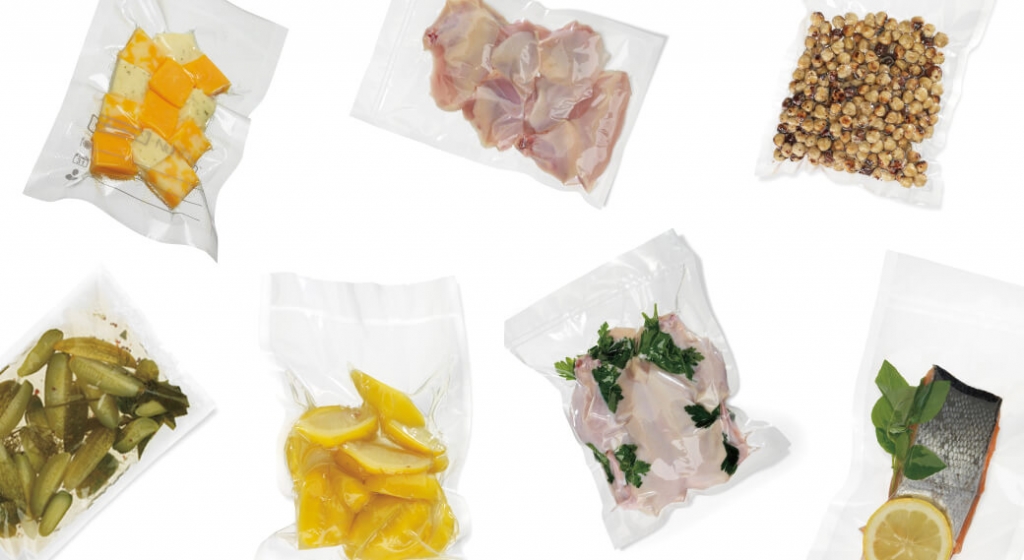


Good
10 Best Commercial Vacuum Sealer Machine for 2022-23 – Which One Should You Buy?
Buying Guide for Commercial Vacuum Sealing Machines